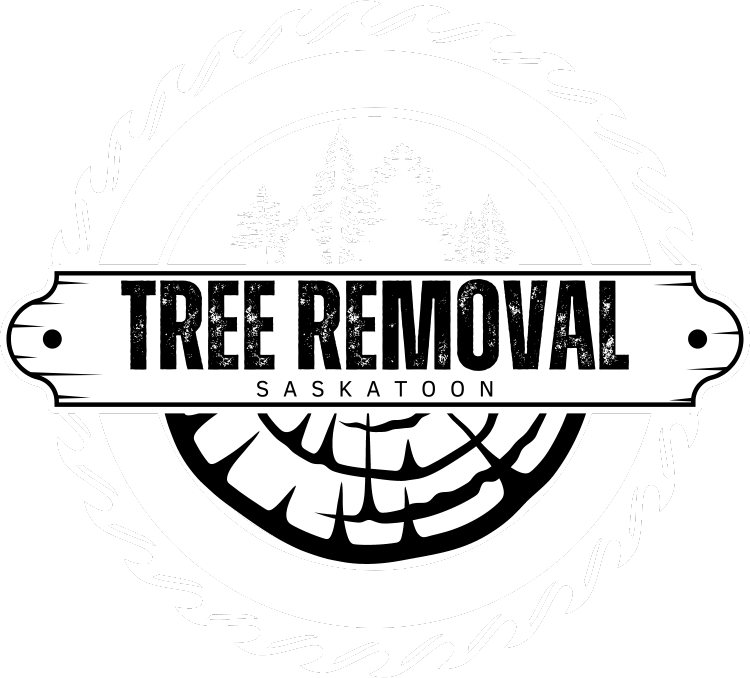
Request A Quote
The Best Saskatoon Arborist Service In The Area
Caring for and maintaining your yard is a big task, and can be daunting. Let us do our part by providing a list of helpful suggestions when handling your own trees and shrubs!
Topics covered;
How to tell if your tree is dying
All you need to know about mulch
Tree topping, and what it is
Signs Of A Dying Tree
When spring arrives, and all the trees start budding, its a beautiful sight. But what if yours doesn't? An obvious way to check is by trying to break some small branches. If they snap with little to no arch, that branch is dead. If you find many branches like this, it could mean the tree is dying.
Another easy test you can perform is the scratch test. By scrapping a little bit of the outside bark off of the tree, you can reveal the cambium layer of bark. If the cambium layer is green and moist, the tree is alive. If the tree is dead, this layer will be brown and dry.
Keep a look out for parts of the inner tree being exposed, which can be a sign of decay. If you notice fungus, this is a sure sign of rotting and dying. Visible cracks in the bark could mean the tree is becoming unstable from previous weather conditions. A tree that shows signs of decay, rot, or instability should be removed as soon as possible to prevent damage or injury.
But its not all bad news! If you catch these signs early enough, its possible to save your tree. Make sure you understand the correct watering and mulching requirements of the tree you have. Properly fertilizing and pruning are also essential in your trees health. Consulting with an arborist or your tree service provider is recommended to get the most accurate advice.

Give Us A Call
Mulching Like An Expert

Inspect your area
Be sure to identify your soil type before you start mulching. If you have a lot of clay where your trees are planted, less will be required as clay holds water very well. On the other hand, if your soil is sandy, the opposite holds true.

Which one to use
Your best bet is to use natural organic mulches made from a mix of compost, saw dust, wood chips and composted leaves. If you're going to use fresh wood chips, stick with putting them around mature trees or shrubs and avoid using them with newly planted or young trees.

How much do you need
Generally you only need about 3 inches spread evenly around the base of the tree. After spreading, use a rake to pull the wood chips around the perimeter, to encompass the width of the crown. Make sure you don't apply too much mulch, as this can cause damage (too much moisture can cause the roots, bark and cambium to rot).

Where do you stop
One thing many people do is mulch all the way up to the trunk of the tree, even sometimes piling up the trunk a few inches. Doing this will promote insect infestations, and can cause disease. By leaving the trunk and root crown exposed, you allow the tree to breathe while allowing adequate airflow and drainage.

Maintain your mulch
Once your organic matter is down properly, you shouldn't have to worry about anything for a while. After storms and through the changing of the seasons, don't forget to watch for natural erosion and shifting. Don't let the mulch pile up against the truck, and top up in the spots needed.

Give Us A Call
Why Tree Topping Can Be Harmful
When your tree grows tall it can come with a few problems. Maybe it has started to grow into your electrical wires, or maybe you think the branches could break off in a storm. The seemingly obvious answer would just be to chop off the top of it, known as topping.
You should consider these points when deciding whether or not you want to top your tree.
- Can lead to insect infestation.
- You can lose a lot of leaves, both from topping and from the branches falling to the ground.
- Your potential new growth will be subject to harsher conditions from storms, which could lead to further damage.
- The tree may never fully recover at all, leading to death.
Overall topping can weaken the tree, leave it unnatural looking and could potentially be very dangerous. Its widely accepted that this is the least favorable practice. With some proper planning (picking the right site when planting), and regular pruning, topping isn't something you should have to worry about. Consult your arborist or tree service provider before commencing any major alterations to your trees!
